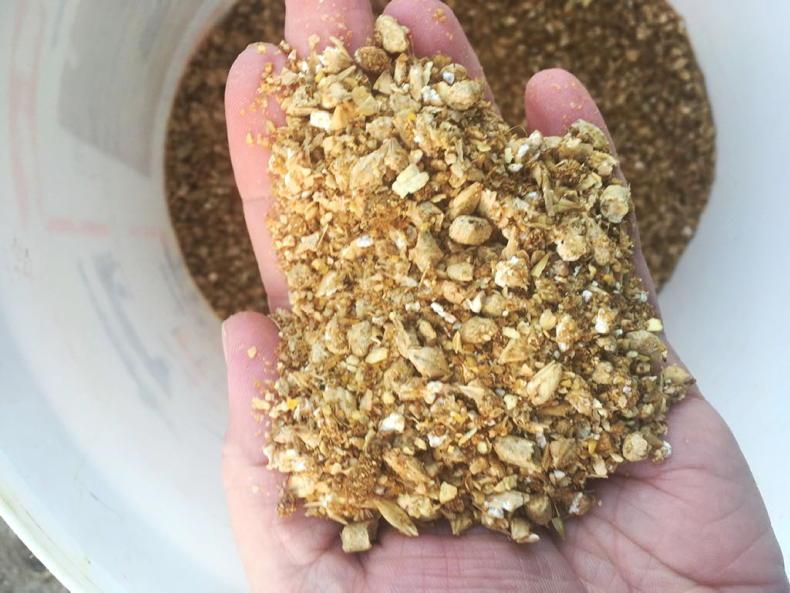The rain has arrived on the THRIVE demo farm and in some fashion. The rain gauge on the farm thinks it has died and gone to Sligo, with over 130mm of rainfall recorded in the last 10 days.
While this was a welcome change as ground was desperately in need of moisture, it has come just too late for the finishing cattle.
Grass growth is now kicking on but there simply wasn’t the covers of grass to maintain finishing stock outside.
The heifers were housed nearly four weeks ago at this stage as we felt if they were kept out, the farm would be just running out of grass as they were coming fit to draft for slaughter.
Delay
Housing them at this point would have delayed slaughter by another fortnight or so.
For this reason it was the bullocks that stayed at pasture for as long as possible. They were being supplemented with silage and meal as a total mixed ration fed through the diet feeder at grass for the last few weeks but when the rain arrived it meant that ground conditions were getting sticky underfoot where supplementation was being offered.
They were housed late last week and have settled well inside as there was no major change in diet given that they were already on silage and meal outdoors.
The bullocks are housed since last week. Now on 5kg conc plus silage. Were being fed outside so no negative effects from changeover of diet. All bullocks weighed and DNA sampled today. Four drafted for slaughter at around 560kg. @FJBeef @farmersjournal pic.twitter.com/0KHpFocFeK
— Declan Marren (@MarrenDeclan) September 13, 2022
The rest of the grass will be grazed by this year’s calves and depending on growth over the next few weeks there should be sufficient supplies to keep at least some calves out until November.
Finishing diet
While the farm aims to slaughter as many stock off grass at the end of the second grazing season as possible, this year it just wasn’t to be. However, since housing the heifers have performed very well and there are 23 drafted for slaughter for next week.
All heifers were weighed last week and they averaged 525kg. Most of the 23 that were drafted for slaughter are either Angus or Hereford with the late-maturing breed types still being leaner, meaning they will take more feeding before being drafted.
The heifers are on 4kg of a barley based finishing ration plus first-cut silage which is 72% DMD and 12.6% protein.
The bullocks are on a kilo or more of the same ration. With a diet feeder on farm, all meal is fed as a total mixed ration which keeps the diet more consistent for the animal throughout the day.
Drafting
Now that drafting has started, it needs to be done every 10 days or so to keep on top of changes in carcase fat score. The Angus and Hereford heifers especially can change quite quickly once on their finishing diet.
Going out of specification for carcase fat score is a double financial hit both in terms of the price per kilo paid for the animal and also for the cost of the feed to put that fat on the animals.
While it would be nice to bring these heifers to bigger weights, the conversion of feed to carcase weight is not sufficient to do so with many of these heifers. Gaining 0.6kg carcase weight a day converts to a beef price of just over €3/day while feed costs currently sit at more than €3.30/day.









SHARING OPTIONS